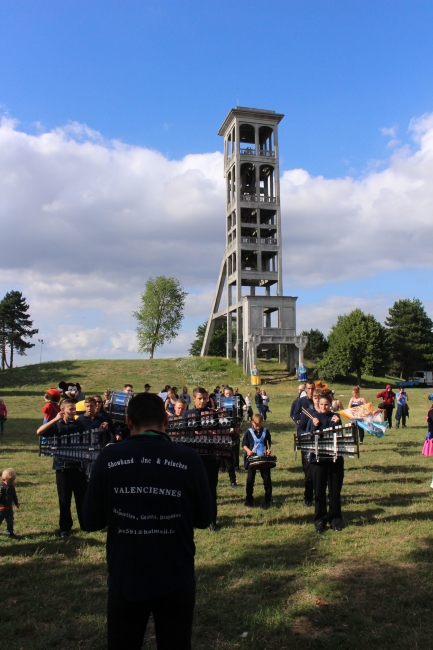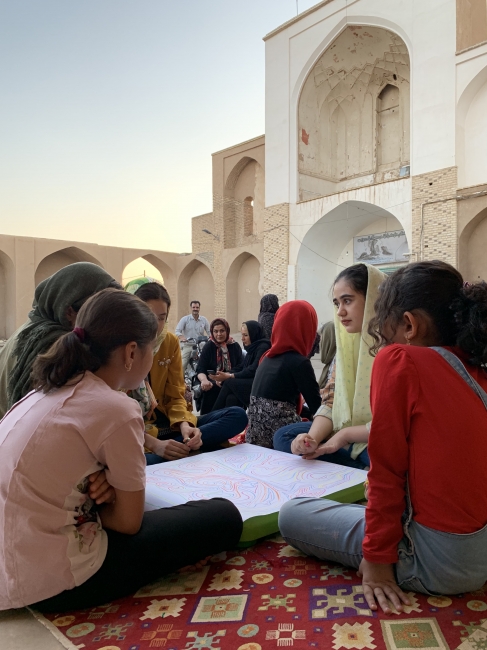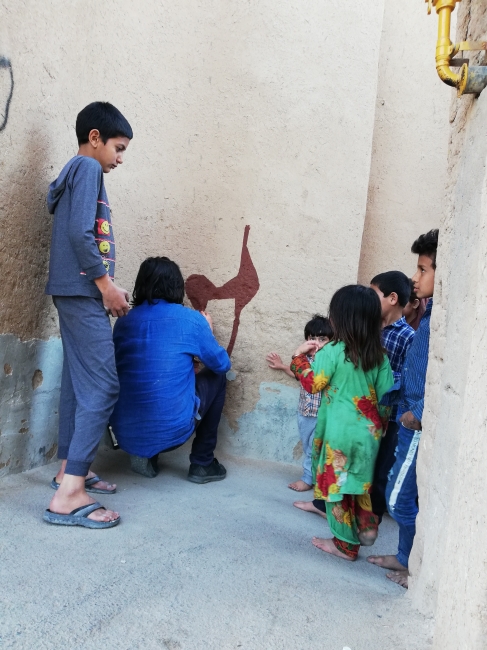| Outstanding Cases VOL.1 | Mining Basin (France) and Sheikhdad Quarter (Iran) |
| PublishDate:2021-10-14 Hits:3255 |
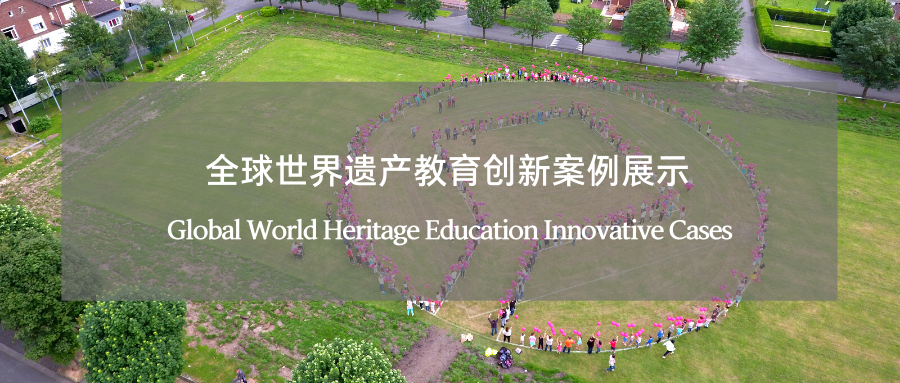 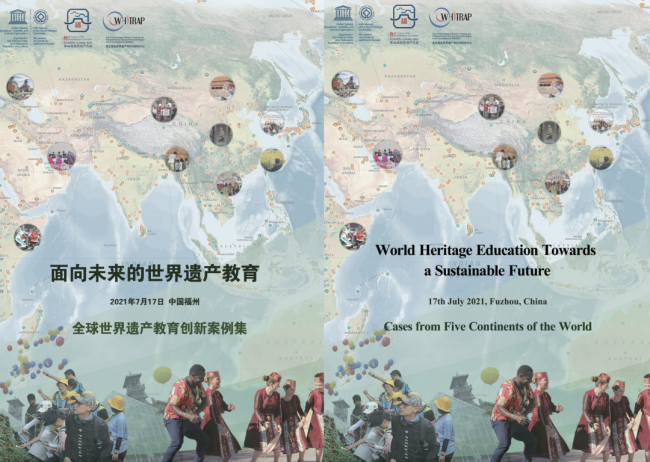 I Background
World Heritage Education (WHE) is not only one of the most important ways to connect people to world heritages, but also a key to a creative solution for sustainable development of the heritage sites. With the accelerated development of the Internet technology in recent years, more and more innovators have accessed the heritage education field. They have not only promoted the regeneration of the contents and methods of heritage education, but also make it possible for heritage education to break existing boundaries and modes.
To correspond to and promote this reform, WHITRAP initiated this Global Innovation Cases of World Heritage Education in the hope to have a fine collection of forward-looking exemplar heritage education cases. The aim is to promote the sharing of relevant international experience and future cooperation, and contribute to the comprehensive and sustainable development of heritage sites. Cases were expected to be characterized essentially by global demonstrativeness which was further supported by four professional criteria of innovation, technology, cooperation and sustainability.
After a month-long application, candidate cases entered the selection stage and were officially presented at the 44th Session of the World Heritage Committee. This initiative received enthusiastic responses from all parties, and WHC’s official website also published WHITRAP’s global call for case studies on World Heritage Education. This initiative has received warm responses from all parties. Nearly 100 WHE innovation cases were collected from five continents of the world within a month, highlighting the emerging trends in various innovation fields and providing an important reference to explore the topic in the future. With reference to future development and model innovation as a global model, five qualities of future-oriented WHE are summarized as follows:
1) Enhancing social inclusiveness and cohesion via heritage education especially for the youth based on heritage protection;
2) Promoting multi-disciplinary integration through cross-boundary innovations and exploring a new model of multi-party cooperation through internal and external combination;
3) Exploring new heritage education concepts and methods according to local conditions via creativity and technology;
4) Rationalizing the use of Internet and digital technology to involve more people online and offline in heritage education;
5) Discovering heritage values and using education as an empowering tool to promote the creative innovative and sustainable development of heritage sites.
Based on the five qualities, the collection of 10 outstanding cases will present their innovation and exemplary significance. Those cases demonstrate a wide range of possibilities of the future WHE from the perspectives of life-time education, digitalization, cyber technology, cultural tourism development, world peace, social integration and philosophy, representing the emerging trends in various innovation fields. The thought-provoking cases provide a guideline for us to explore possible actions for the future WHE development.
In the series of the presentation of outstanding cases, we will focus on the educational activities for world heritage sites or specific heritage values, presenting their practical effects and valuable lessons over the past five years. This issue will involve two cases: “Ambassadors for heritage: inhabitants valorize their Nord-Pas de Calais Mining Basin!” (France) and “Conservation of Sheikhdad quarter through local community participation: An emphasis on the education of children” (Iran). Let’s discover their innovative features in “enhancing social inclusiveness and cohesion via heritage education especially for the youth based on heritage protection”.
II Outstanding Cases (Vol.1) 1. Ambassadors for heritage: inhabitants valorize their Nord-Pas de Calais Mining Basin! (France)
1) Introduction Since 2012, the Nord-Pas de Calais Mining Basin is inscribed on the UNESCO World Heritage List. The case study “Ambassadors for heritage: inhabitants valorize their Word Heritage Nord-Pas de Calais Mining Basin!” was developed within this framework. Started in 2017, the project is based on an innovative cooperation between different actors and targeting inhabitants from young people to seniors. Several activities have been organized, including street interviews by teenagers, collective celebration called “Black colour suits you so well”, discovering mining heritage with the Tourists Office, and writing the tale “the Ugly little Headgear” with inhabitants of all ages. These initiatives have not only sensitized inhabitants to Mining Basin as World Heritage, but also encouraged each inhabitant to be proud of living in the coalfield. Thus, WHE has contributed to promoting tolerance in society.
Black colour suits you so well celebration
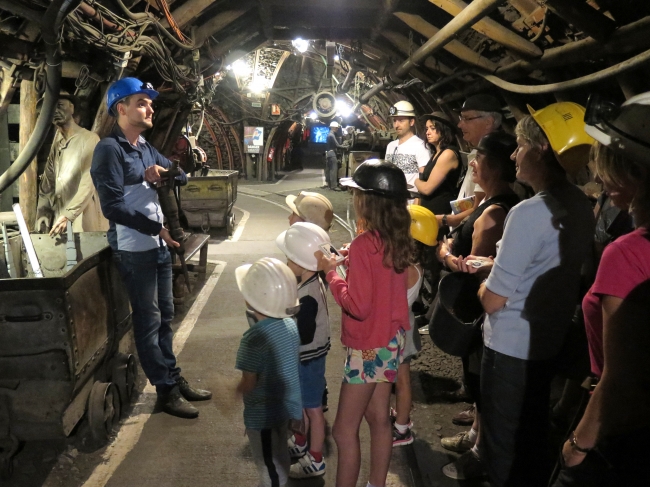 The staff introduced the mining process to tourists
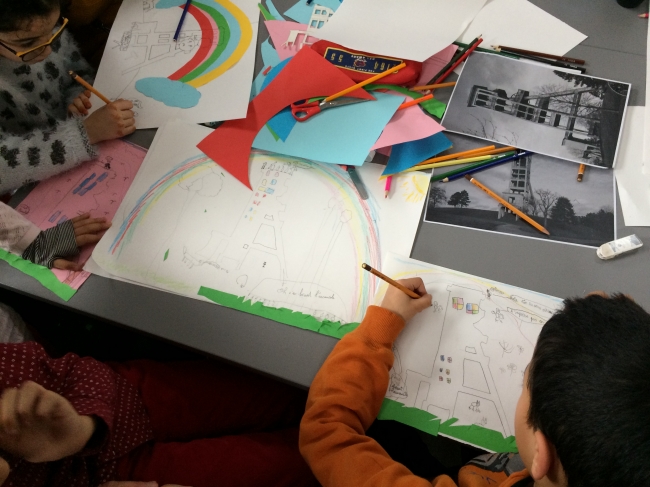 Residents gathered together to draw “Ugly Little Miner”
II. Innovation
The main innovation element of the case study lies in matching UNESCO and World Heritage values and French Social Action objectives. The project focuses on understanding what international heritage is and how to protect it but also on understanding that beyond the differences between people (religion, language, culture…), there is first a common history and some solidarities. Through the World Heritage, it is a contribution for learning tolerance and alterity and fighting against all types of discrimination. The tale “the ugly little headgear” is one of the most significant elements of this case study general philosophy.
The second innovation of the case study lies in the project’s cooperation framework. It puts together, in an exceptional way, a diversity of partners and stakeholders from different sectors, with specific expertise and authority, with professionals not only coming from cultural heritage conservation and promotion fields and backgrounds. They include inhabitants themselves, five social centres, Mission Bassin Minier, state services, city of Valenciennes.
The last innovative and exceptional point lies in the long-time scale approach. The project runs since 2017, with regular funding year by year. Time is definitely the main key for substantive and extensive work with people, in the framework and following the objectives previously developed.
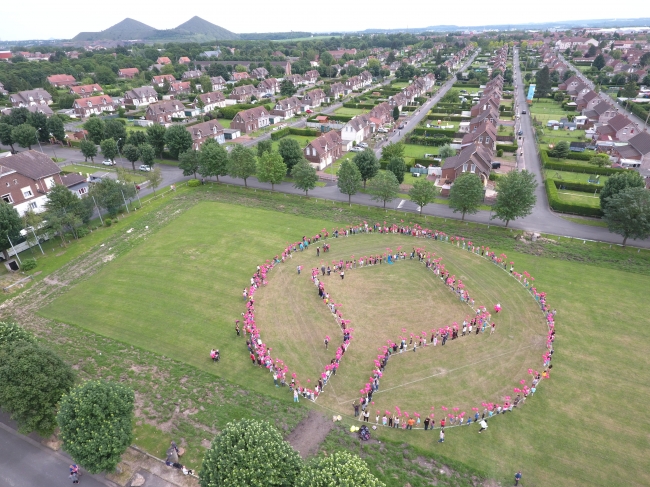 Tourists hold World Heritage activities on the lawn III. Exemplary Significance
The exemplary significance of the case study lies in:
• Matching UNESCO and World Heritage values and French Social Action objectives: peace keeping, respect of justice, law and human rights, fundamental freedoms, respect for cultural diversity, human dignity, democracy and solidarity… The case study also combines Social Action and Sustainable Development objectives: culture, creativity, social inclusion, popular education, and fight against discrimination.
• The framework of the project itself, gathering in a long-time scale approach and in a perfect balance, stakeholders from different sectors, with different expertise and authority, each playing their respective parts: inhabitants, social centres, Mission Bassin Minier, state services, City of Valenciennes.
• The use of the World Heritage List and of the WHS Nord-Pas de Calais Mining Basin status to raise well-being and pride of local communities and to contribute to a new attractiveness and territorial development by a change of vision.
2. Conservation of Sheikhdad quarter through local community participation: An emphasis on the education of children (Iran)
1) Introduction
The case study is in Sheikhdad, a neighborhood in the Historic City of Yazd, UNESCO World Heritage since 2017. A voluntary and independent group of five people have participated in the project of participatory conservation of cultural heritages for one year. The targeting groups are local people with a focus on the youth generation. Using a bottom-up approach, we created a space to involve various socio-economic and cultural groups in the neighbourhood and prioritize addressing their needs. Conservation experts also stood by the people during the process and, for better understanding, observed the current situation to create a balance between their learnings and local realities.
The case-study consists of three main components:
1. Involving children and teenagers through some art projects: The Dachban project was formed with this message “Art for all children”. Shserop team held some sessions in Sheikhdad, the historic neighbourhood of Yazd, for all children including those who are not in a good economic condition so every child and teenager could practice painting. 2. Participation: Painting was an indirect way of involving children’s opinions in the process. The painting was a beginning. Various other actions took place along the way; like walking in the neighbourhood and exploring it with children, telling stories to them. We asked them to identify the insecure parts of the neighbourhood and tell the reason for the insecurity. Besides, the children, at their request, became in charge of the Sheikhdad Children’s Library. In the meanwhile, we held also some sessions for mothers, so we could also involve women and ask about their needs. 3. Conservation: We could build trust and create a sense of responsibility towards heritage in children and take objective and practical steps to preserve the heritage.
The main objectives in this project are to engage the local community especially the youth of Sheikhdad in improving the quality of their living environment, sensitizing them to the historical fabric, and raising public awareness of the tangible and intangible values of cultural heritage.
Residents discussed children's education together
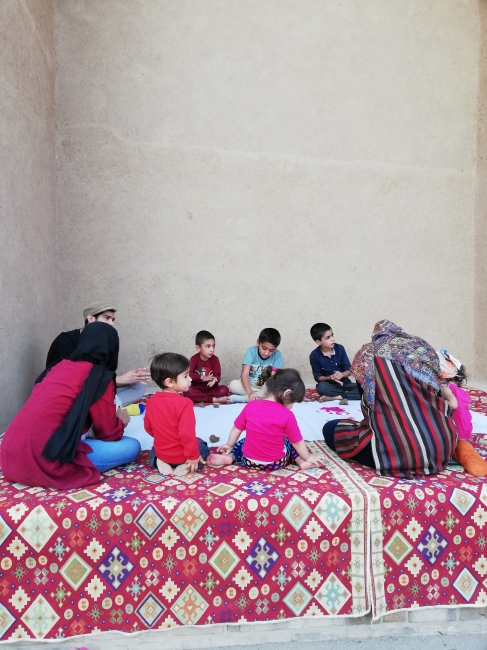 Children sat together and carried out educational activities
2) Innovation
In this project, education and participation are intertwined and integrated, and an attempt has been made to introduce the concept of heritage conservation in the weekly life cycle of children with a continuous program, and everyday collaborative education to occur.
Efforts were made in group activities such as preparing a mind map, thematic and free drawings, building a local library on children’s cooperation with each other, responsibility and leadership of children in three stages of planning, action and emphasize evaluation, which promotes self-confidence, self-esteem, and independence of neighbourhood children. During these processes, more training and necessary assistance are provided to children at the request and feeling of need.
In conveying educational concepts to children, efforts were made to use methods and tools that include children’s perceptual components (imagination, entertainment, narration, innovation and technology, adventure, etc.) and also to revive indigenous and historical cultural patterns in practice and ideas. For example, indigenous occasional activities such as Taziyeh were revived by children, and animation was made for children to narrate the history of the neighbourhood.
Moreover, children’s agency was strengthened by accompanying artists who came to the neighbourhood by showing and introducing the place and guiding them in the neighbourhood, and helping the artist. The flexibility of activities and the creation of a free space facilitated the possibility of the presence of different groups of people and children, especially the deprived and quieter groups.
Children and artists in the neighborhood 3) Exemplary Significance
One of the highlights of this project is the promotion of participatory actions with a focus on the role of people in a framework that is very difficult to achieve effective participation. In fact, most participatory activities are limited to conversations, counselling, or cross-cutting sessions, but the project focused on a long-term process that brings all social and cultural groups together. In addition to hearing the voices of the people, especially the voices of children as one of the socially disadvantaged groups in decision-making, we tried to follow their opinions and ideas. Thus, they could feel the effects of their opinions objectively. The experiences during the Sheikhdad project can be very useful for other collaborative projects and teaching cultural heritage to children, especially in developing countries, where the project can be recognized as a stimulant for children engagement projects in the conservation of cultural heritage.
In this issue of the presentation of outstanding cases, two case studies from France and Iran demonstrate the useful experience of building a positive relationship between world heritage and local people through innovative education. A series of conservation-based educational activities continue to explore the sense of responsibility of heritages among people of all ages, with a particular focus on enhancing the participation and of young people. In this way, the value of heritages is no longer limited to professional institutions, instead, the awareness of heritage conservation will be raised in the whole society. The cases also promote social inclusiveness and cohesion through WHE, realizing the all-round development of both heritages and people.
III Summary
We sincerely wish heritage education practitioners and participants could learn from and get inspired by this presentation of outstanding cases. It would be encouraging to us if the five features summarized above could provide insights to tailor-made innovation practices in the future. The completion of the case collection marked yet another beginning. In the future, we will continue our efforts from here and make endeavors to establish an international network for WHE cooperation and exchange, thus contributing to the innovation of heritage education and the all-around and sustainable development of the heritage sites.
In the next issue, we will present two outstanding cases: “Smithsonian Education Project for Digital Access to China’s Terracotta Army” (Sino-US) and “National Youth World Heritage Education Program” (China). We will discover their innovative features in “promoting multi-disciplinary integration through cross-boundary innovations and exploring a new model of multi-party cooperation through internal and external combination”.
Contributed by: WHITRAP Working Group
Edited by: He Yixuan, Zhang Yiyang
|
- News | WHITRAP Shanghai and CNR-ISPC bilateral meeting
- News | WHITRAP meets Cité de l’Architecture et du Patrimoine
- WHITRAP Hosting "Workshop on Preliminary Assessment for National Focal Points of the Asia Region" in Chengdu
- WHITRAP Shanghai meets UNESCO
- INTERNATIONAL CONFERENCE PRELIMINARY ANNOUNCEMENT & CALL FOR PAPERS
- Observation of the 46th Session of the World Heritage Committee
Copyright © 2009-2012 World Heritage Institute of Training and Research-Asia and Pacific (shanghai)


